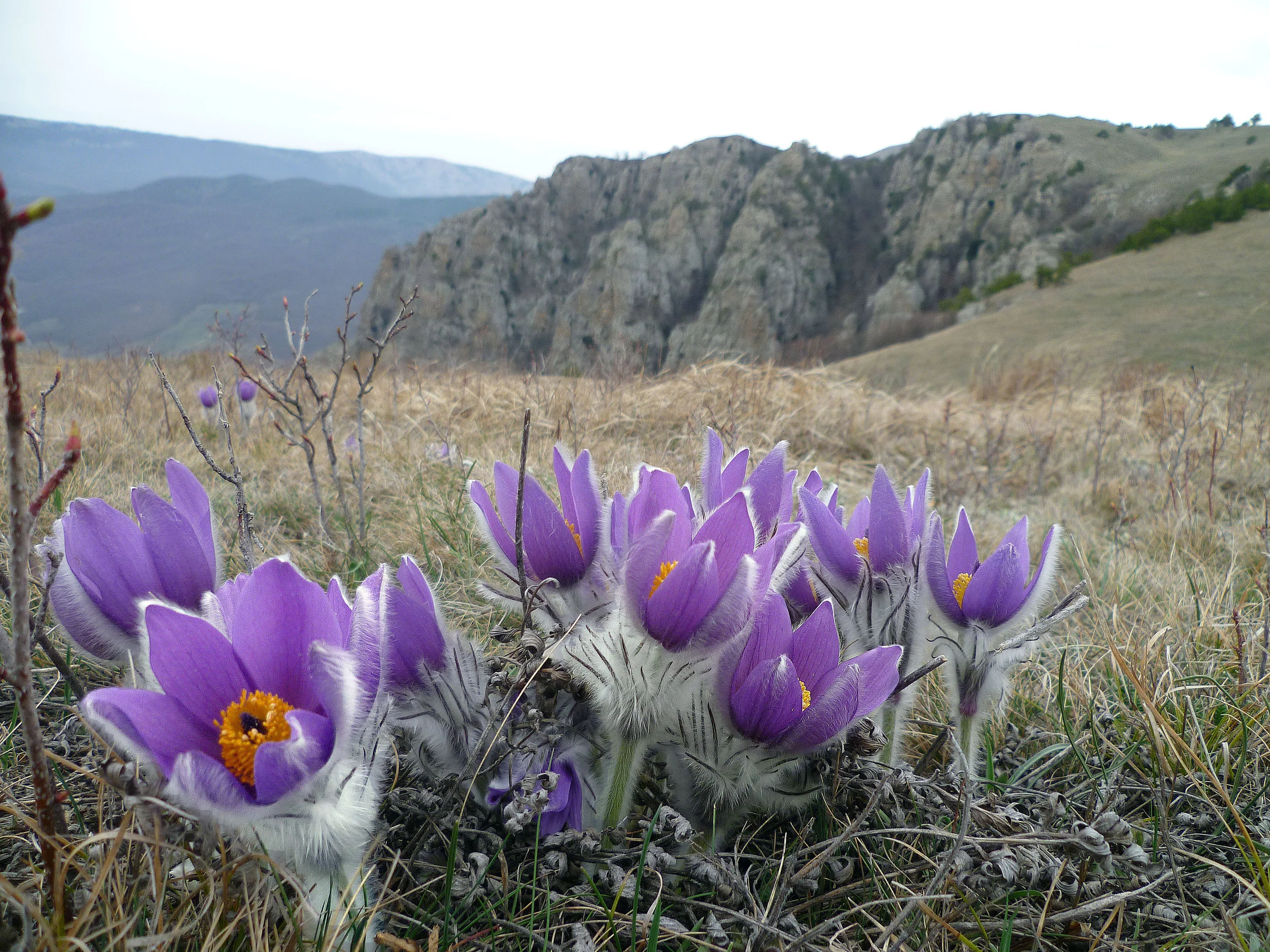Photo by Jerzy Strzelecki licensed under CC BY-SA 3.0
The true harbinger of spring on the northern prairies of North America, Europe, China and Russia is none other than the pasqueflower (Anemone patens). It bursts forth from the ground with its fuzzy, dissected leaves often before all of the snow has had a chance to melt. It then proceeds to put on quite a show with flowers that range the spectrum from white to deep purple. Everything about this plant is adapted to take advantage of early spring before competing vegetation gets the upper hand.
One of the coolest aspects of pasqueflower life are its flowers. These parabolic beauties need to be able to function despite the constant risk of freezing temperatures. To stay warm, the flowers will actually track the sun's movement across the sky. In this way, they are able to absorb solar radiation all day. What's more, the parabolic shape and reflective surface of the petals serves to bounce solar radiation towards the center, thus amplifying the amount of heat. Pasqueflower blooms can actually maintain a daytime flower temperature upwards of 18 degrees Celsius above ambient temperatures, not only providing a warm spot for pollinators but also increasing the rate at which the seeds develop.
Photo by Otro13 licensed under CC BY-SA 3.0
The seeds themselves are quite interesting structures as well. Getting into the soil can be a difficult task when your neighbors are thick prairie grasses. Pasqueflowers get around this problem by producing seeds that literally bury themselves. Each seed is attached to an awn that is made up of alternating strands of tissue. Each strand varies in its ability to absorb moisture. As spring rains come and go, the awns will twist and turn with the resulting effect of drilling the seeds directly into the ground.
Once the surrounding vegetation begins to wake up, pasqueflower is already getting ready to go dormant. By mid-July it is usually back underground. It is a prime example of how breaking dormancy early can help a plant beat the competition of the growing season. Also, pasqueflower can be very long lived, with individuals persisting upwards of 50 years in a given location. Not only is this plant is both hardy and beautiful, it also has the added ecological benefit of providing early prairie pollinators with a much needed boost of energy.
Photo Credit: [1] [2]
Further Reading: [1] [2]

